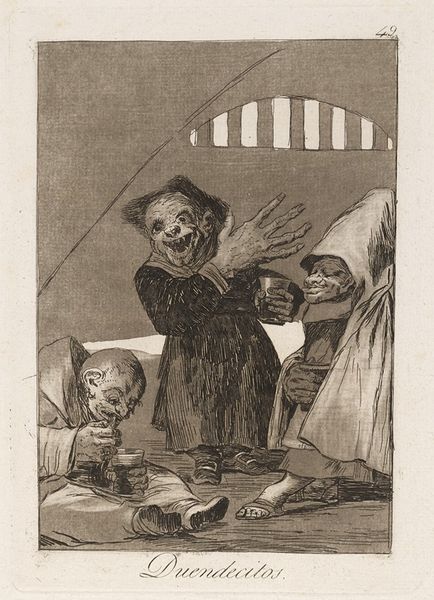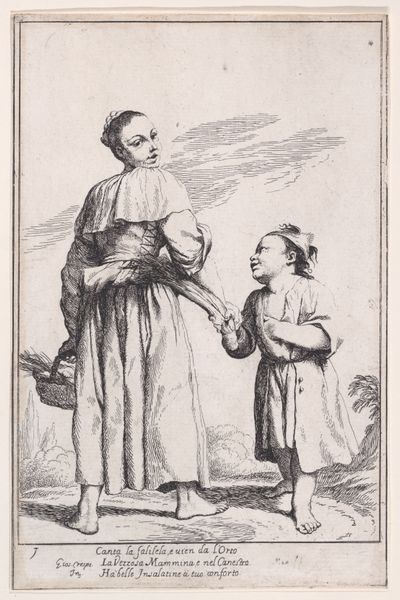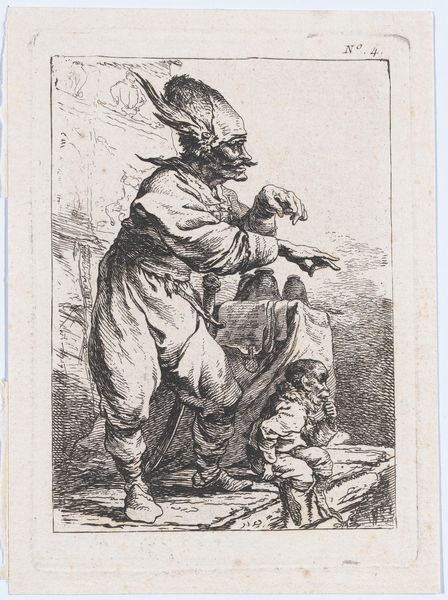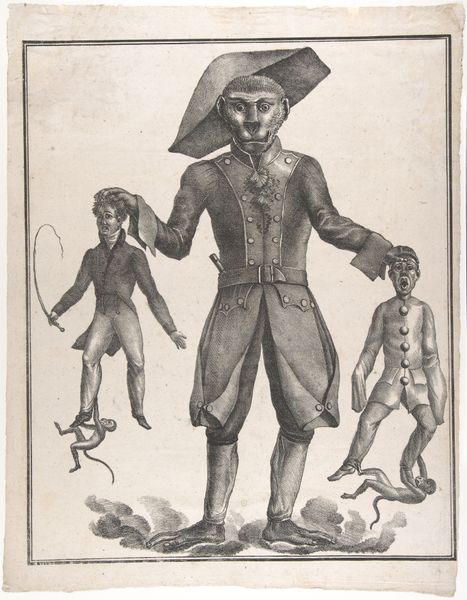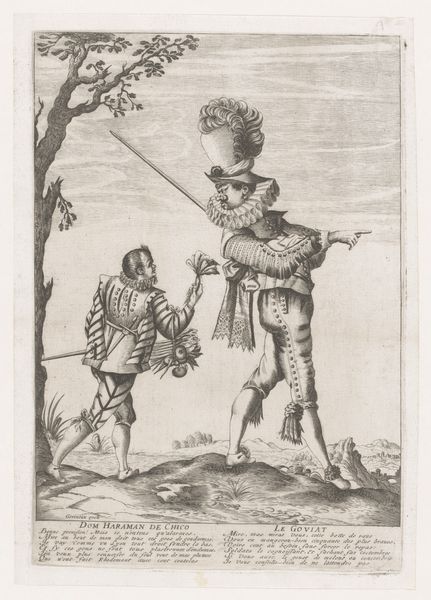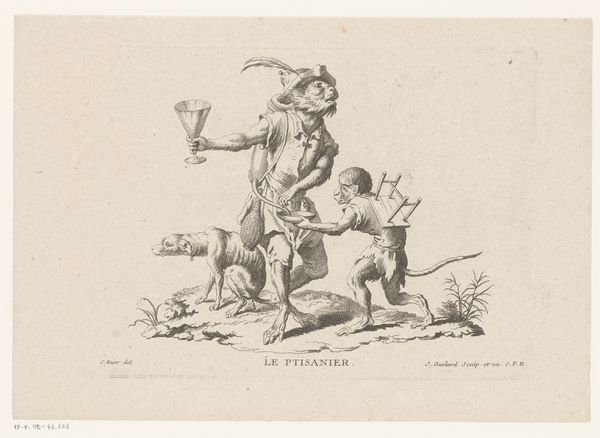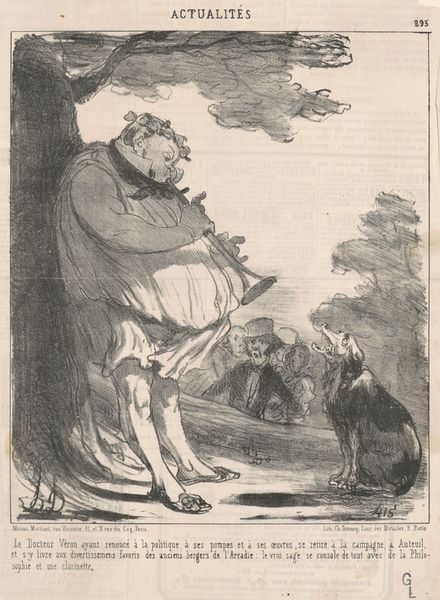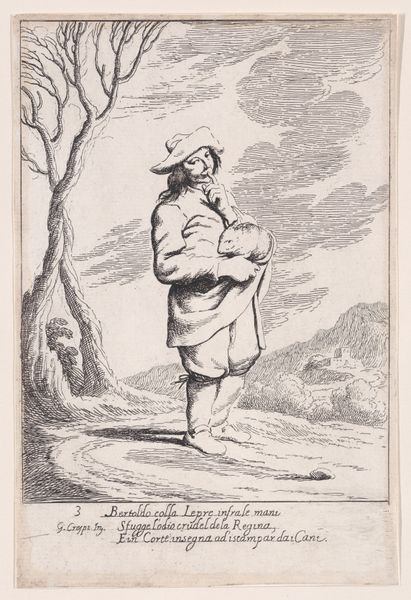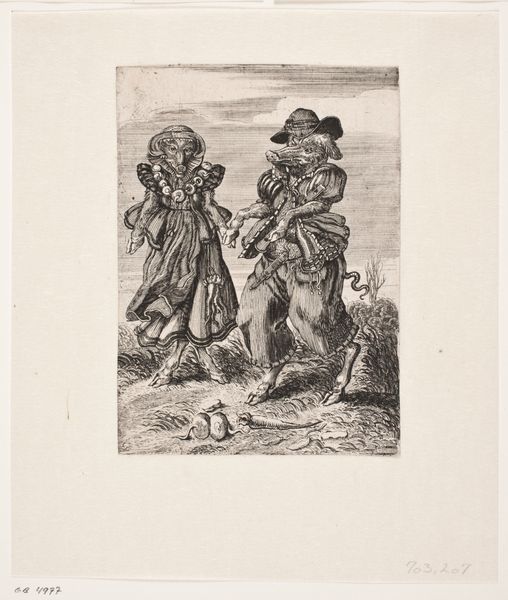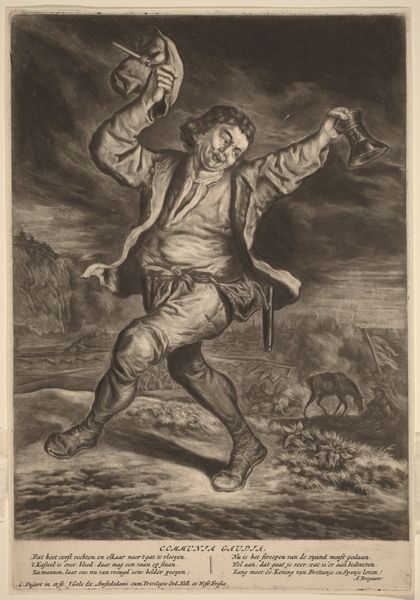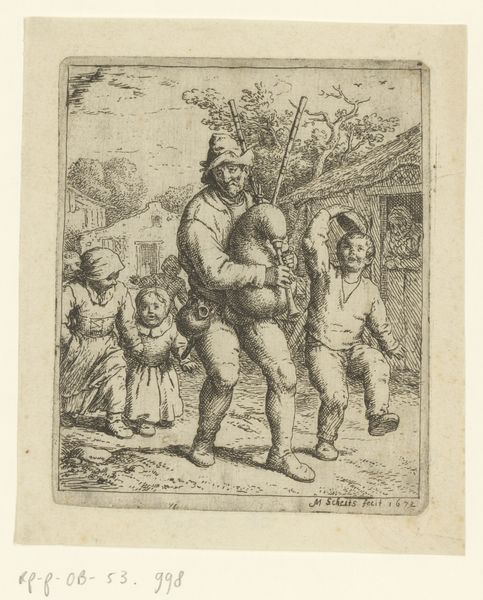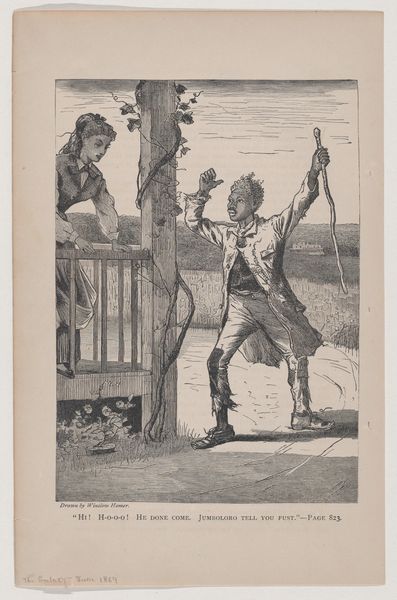
Plate 14: Bertoldino cutting off the ears of a gardener's donkey, from "Bertoldo, Bertoldino, and Cacasenno" 1705 - 1715
0:00
0:00
drawing, print, etching
#
drawing
#
narrative-art
#
baroque
# print
#
etching
#
caricature
#
figuration
#
line
#
genre-painting
#
italian-renaissance
Dimensions: Sheet (Trimmed): 9 in. × 5 13/16 in. (22.9 × 14.8 cm)
Copyright: Public Domain
Curator: Let's dive into this etching by Giuseppe Maria Crespi, "Plate 14: Bertoldino cutting off the ears of a gardener's donkey, from "Bertoldo, Bertoldino, and Cacasenno," dating from the early 18th century. What are your initial thoughts? Editor: Well, it's certainly... quirky. There's a small figure, presumably Bertoldino, holding what appears to be a donkey ear, with a very distressed man in the background. It’s a bit absurd, honestly. How do you interpret this work? Curator: Absurdity is key! Consider this within its historical context. Crespi was working in a time when social hierarchies were rigid. The comedic narrative offers a space to question authority, albeit through crude humor. The act of cutting off the donkey's ear—who does that impact, really? Is it about the gardener's property, the donkey's dignity, or perhaps the established order? Editor: That's interesting, I hadn’t considered the power dynamics at play. So, it’s more than just a funny scene? Curator: Precisely. The image engages with class and perhaps speaks to the frustration of those with little social power acting out against the symbols of the relatively more powerful but ultimately still not particularly powerful gardener. What about the way Crespi uses line to depict the figures? Notice the roughness, almost caricature-like quality, especially in Bertoldino himself. Editor: Yes, it makes him look mischievous, but also almost... pathetic? Curator: Exactly. This ambiguity is intentional, creating a complex representation. It's an act of rebellion, yes, but perhaps also a commentary on the consequences and the ethics, or lack thereof, within marginalized communities forced to take drastic action in their struggles with social norms. How might contemporary audiences react to this today? Editor: I think that bringing in current theory offers us some intriguing insights. Considering intersectionality, maybe Bertoldino’s actions can also prompt reflections on the complexities of social justice and moral questions of when “the ends justify the means," or perhaps a call for a broader examination of injustices suffered by marginalized groups who face such stark choices. Curator: Exactly! We must engage with its layered messages rather than just dismissing it as simple jest. Editor: This gives me a lot to think about; it definitely reframed my initial impression!
Comments
No comments
Be the first to comment and join the conversation on the ultimate creative platform.
